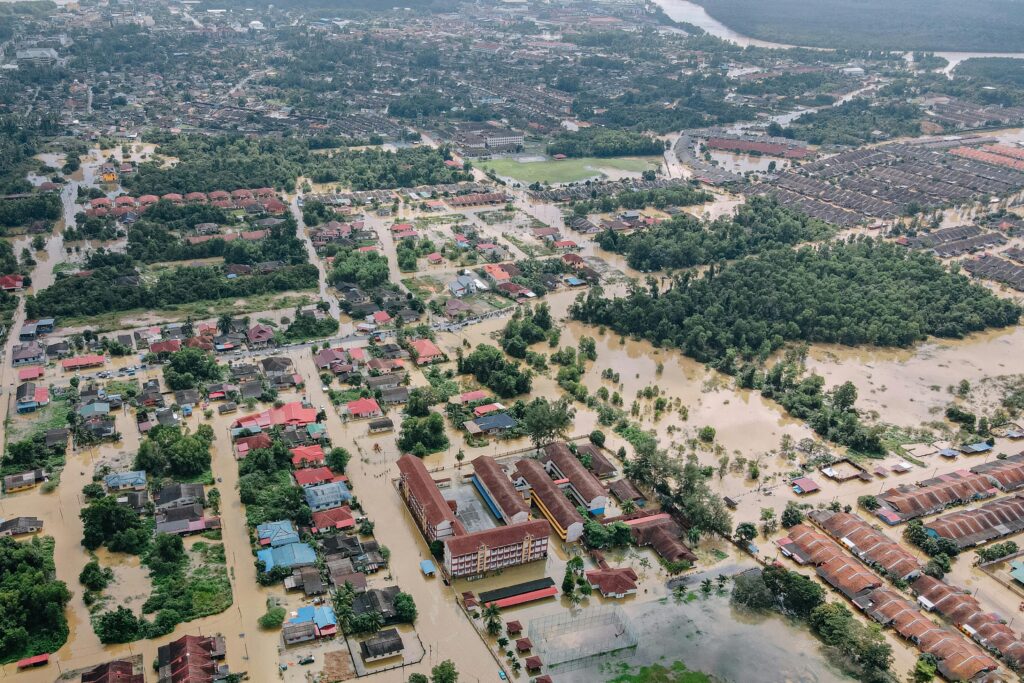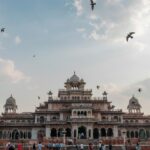The Yamuna River, often regarded as Delhi’s lifeline, has once again reminded the national capital of its unpredictable might. On September 4, 2025, the river’s water level surged past 207 metres, crossing the danger mark and triggering widespread alarm across the city. For residents, authorities, and businesses, the swelling Yamuna is not just a natural phenomenon—it is a crisis that disrupts daily life, displaces families, and exposes the city’s fragile flood-management systems.
This year’s surge has been especially severe. At the Old Railway Bridge, one of the primary monitoring points, officials recorded a water level of 207.48 metres at 7 AM. This makes it the third-highest water level in Delhi in over six decades. With heavy discharge from the Hathnikund Barrage in Haryana and relentless monsoon rains, the Yamuna continues to flow menacingly above safe levels.
Impact on Low-Lying Areas
Floodwater has inundated many low-lying neighborhoods, leaving thousands of people stranded or forced to evacuate. Areas such as Civil Lines, Bela Road, Sonia Vihar, Yamuna Bazar, and stretches along Ring Road have been hit the hardest. Residents report knee- to waist-deep water entering homes, shops, and even schools. For many families living in informal settlements near the riverbank, the rising water has meant abandoning their modest belongings and seeking safety in relief shelters.
The Delhi Secretariat, where the Chief Minister’s office and several top bureaucratic departments are located, is also under threat. Authorities have already placed sandbags and deployed pumps to prevent water ingress, but the risk remains high. The sight of government offices at risk underscores the scale of the crisis—when even the administrative core of Delhi is vulnerable, ordinary citizens face an even greater struggle.
Sacred Spaces Under Water
Another area deeply affected is Nigambodh Ghat, Delhi’s oldest and busiest cremation ground. Floodwaters have already entered parts of the site, raising concerns about disruptions in cremation rituals. This is not just a logistical issue but also a cultural and emotional one. For grieving families, being unable to perform last rites properly adds to their pain. Similarly, several temples along the Yamuna’s banks, including the Shri Marghat Wale Hanuman Baba Mandir, are submerged or cut off.
Disrupted Transport and Daily Life
Transport has been thrown into chaos. Roads near the Yamuna Bank Metro Station, portions of the Outer Ring Road, and connecting routes toward ITO and Kashmere Gate are flooded, forcing diversions and road closures. Commuters, already struggling with Delhi’s usual traffic snarls, now face extended delays and uncertainty. Metro services, while functional, are seeing increased crowding as people turn to trains to avoid waterlogged roads.
The economic cost is rising each day. Shops in flood-hit areas remain shuttered, supply chains are disrupted, and vendors who depend on daily earnings are facing financial hardship. For many small businesses, even a few days of closure can mean devastating losses.
Rescue and Relief Efforts
Authorities have swung into action with evacuation and relief measures. According to official estimates, more than 12,000 residents have been shifted to relief camps set up across the city. Teams from the National Disaster Response Force (NDRF) and the Delhi Disaster Management Authority (DDMA) are working around the clock to ferry stranded families to safety. Boats, buses, and even tractors are being used in some localities to navigate submerged roads.
Relief camps are providing food, drinking water, and medical assistance, but challenges remain. Overcrowding, lack of sanitation facilities, and the risk of water-borne diseases loom large. Civil society groups and volunteers have also stepped in, distributing essentials such as biscuits, milk, and medicines to those affected.
Why Does Delhi Flood So Easily?
The Yamuna’s fury is not new to Delhi. Experts point out that the capital’s flood vulnerability is the result of multiple factors. Rapid urbanization has encroached on floodplains, reducing the river’s natural capacity to absorb excess water. Construction along embankments, inadequate drainage systems, and silt accumulation in the riverbed make matters worse.
Additionally, sudden large discharges from the Hathnikund Barrage often push water levels beyond manageable limits. Climate change is adding a new layer of unpredictability, with heavier and more erratic rainfall events. Together, these factors create a recurring flood crisis almost every monsoon season.
Lessons From History
This year’s surge is being compared to the catastrophic floods of 1988, when the Yamuna rose to over 207.49 metres, and the more recent deluge in 2023, which submerged large parts of the city. Each event has left behind stories of displacement, economic losses, and public hardship. Yet, despite repeated warnings, long-term flood management strategies have not kept pace with the scale of the problem.
The Way Forward
While immediate relief is the priority, experts stress the need for long-term solutions. These include:
- Better Floodplain Management – Preventing illegal construction and restoring wetlands can help the river reclaim its natural buffer zones.
- Improved Drainage Systems – Modernizing Delhi’s outdated drainage network would reduce waterlogging during heavy rains.
- Early Warning Systems – More accurate, real-time data sharing between states on barrage discharges could give residents more time to prepare.
- Climate Resilience Planning – With extreme weather becoming more common, Delhi must invest in infrastructure that can withstand shocks.
A City Holding Its Breath
As Delhi watches the Yamuna swell past the 207-metre mark, the mood in the city is one of anxiety and resilience. Residents are clinging to the hope that water levels will stabilize and eventually recede. But for now, the river’s rise is a stark reminder that nature demands respect and preparedness.
The Yamuna has flowed through Delhi for centuries, nourishing its people and shaping its culture. Yet, as climate challenges grow, the balance between river and city is becoming increasingly fragile. For the millions who call Delhi home, the swollen Yamuna is not just a headline—it is a lived reality, shaping their days, their safety, and their future.




